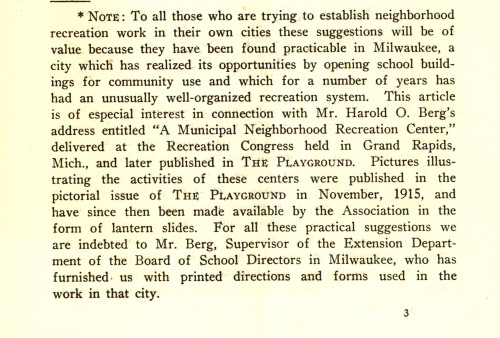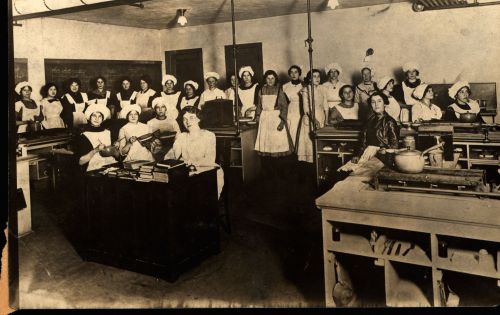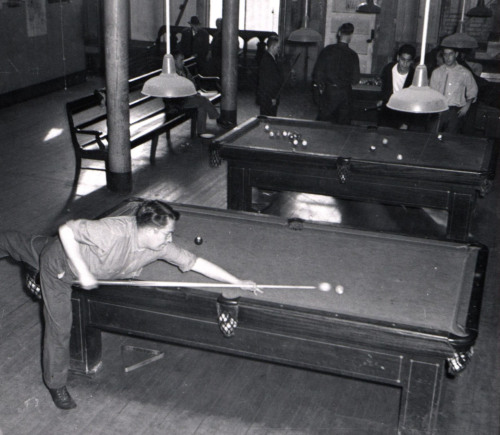#social clubs
In 1918, Harold O. Berg, supervisor of theMilwaukee School Board Extension Department, published this 23-page booklet called “Practical Aids in Conducting a Neighborhood Recreation Center.” It offers suggestions to directors of recreation centers on how to conduct a range of social activities that include basketball and indoor baseball, quiet game rooms, dancing classes and socials, and library readings rooms. As is noted at the start of the booklet, recreation centers played a major role in Milwaukee because recreation was recognized as an essential aspect of education.
The city’s Municipal Recreation and Community Education program was established in 1911 and the first two social centers, operated from Milwaukee schoolhouses, were opened in 1912. By 1948, forty social centers were in existence in all areas of Milwaukee, and they offered more than one hundred different activities that included drama clubs, music organizations, athletics, games, club activities, and arts and crafts. Many of those activities followed the gender norms of the time, as is noted in the photographs. The women and girls from the Forest Home Social Center are pictured at cooking and dancing classes (dated 1900-1930), while their male counterparts at 923 Market Street are pictured playing checkers and billiards (dated 1954).
Most of the work of the Extension Department was on behalf of young people, 17-23 years old, who fell outside of the regular school system and who typically worked during the day and had increasing amounts of leisure time at night. In essence, one of the major goals for Milwaukee’s social centers was keeping young people occupied and out of trouble.
More information and photographs of Milwaukee’s recreation history can be found at UWM Archives in the Milwaukee Public Schools, Department of Municipal Recreation and Community Education Scrapbooks collection, 1923-1989.
“Practical Aids in Conducting a Neighborhood Recreation Center,” along with the photographs from the Forest Home and 923 Market Street social centers, are available in Box 36 of the collection.
Call number: UWM Manuscript Collection 151
-Jamee, Archives Graduate Intern
Post link










